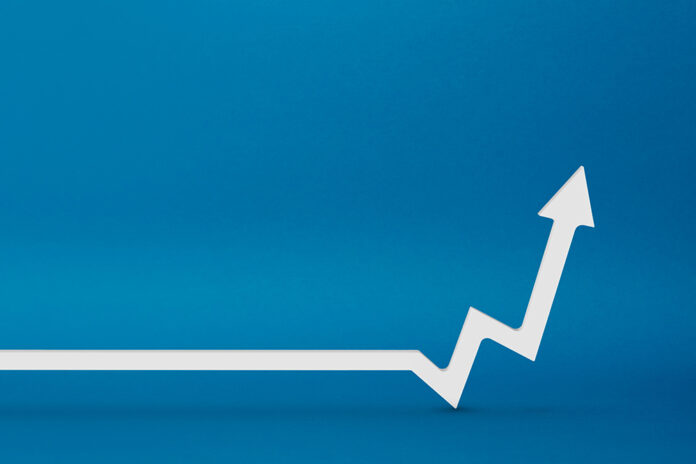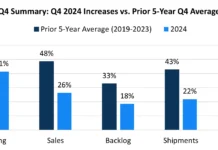By Chris Kuehl, managing director, Armada Corporate Intelligence
There has been a great deal of mood shifting as 2023 gets underway. At this juncture, it is as easy to find a pessimist predicting a deep and long recession as it is finding an optimist asserting the downturn will be mild. Why the variability?
The easy answer is that some very significant motivators for the overall global economy have started to change, and nobody is quite sure how real these changes are. The fundamental question through all of 2022 was what to do about inflation. The rate had exploded to levels not seen in 40 years and at this stage, these numbers are still high but not as high as they have been. The assertion is that global inflation started to peak in the fourth quarter of last year, and the data suggests that this is true. The latest CPI showed inflation down to 6.5% and just about a year ago it was at 9.2%. The wholesale inflation rate fell by 0.06% when the expectation was for a fall of about 0.1%. There have been declines in the producer price index and declines in commodity prices and even shipping rates. The inflation rate is by no means low – the Federal Reserve watches the performance of the Personal Consumption Expenditures (PCE) and it has dropped to around 4.4% (the target is 2.0- 2.5%).
Why does all this matter to the manufacturer? Beyond the obvious reason that it means that prices for inputs are slightly lower, there is a connection between inflation and the interest rates that are set by the central banks. The Fed has indicated that it will slow and even halt hiking rates when it determines it has done enough to break the back of inflation.
Has that point been reached? The latest statements from the Fed suggest they are looking at no more than a quarter-point hike at their next meeting and it was just a month ago when the consensus view was for a half or even three-quarter-point hike.
Generally, the central banks (including the Fed), use employment as their indicator but the job market has been skewed by the chromic worker shortage. This has been obvious in the manufacturing sector. By this point, many in the industrial community would have been laying people off but they are reluctant to lose the trained and skilled people they had to work so hard to find. This has meant a delay in the employment gauge and the banks are looking at other indicators to determine whether they have done enough.
One of these is the performance of the Purchasing Managers’ Index and the US is now down to 46.6. Globally, there are now 22 nations that have fallen below that 50 line. Two of the most notable exceptions have been Mexico (51.3) and, especially India (57.8). Canada is not all that far from expansion with a reading of 49.2. India has been the big winner of late. It always has been understood that India can make whatever China can make, their Achilles heel has been their transportation infrastructure and the notorious bureaucracy. The supply chain mess that has overtaken China, has allowed nations like India to grow their export business despite those inhibitions.
Obviously, interest rates matter, and now there is considerable debate over what they might look like in the months to come. There are still those that predict rates at 5.0% or even 5.5% but there are many that are asserting they will not go that high after all. The trigger for this reassessment has been the erosion of inflation. There have been many indicators pointing towards that easing. Wholesale inflation fell more than expected, the Germans have seen its Producer Price Index fall, energy prices are down and so are shipping rates. Inflation is certainly still high and still at levels not seen in close to three decades, but the trend has been in a direction that has the markets believing that central banks are close to halting interest rate hikes. If past patterns hold, that means that rates could start heading down again as soon as the coming summer.
The plastics industry is very sensitive to the developments in the oil and gas sector, and here the news has been better as well. The US is set to produce between 13 and 14 million barrels a day – this would be a record. The US level of consumption is now at about 20 million bpd and which is down from 24 million bpd just a few years ago. Gas production is likewise up, and prices are expected to fall and stabilize. The Energy Information Agency predicts West Texas Intermediate prices to be in the high 70s and low 80s. That translates into gasoline at around $3.60 a gallon nationwide and diesel at around $4.00. This is down from the averages in 2022. Natural gas prices have been falling for weeks and reached the lowest levels since 2021, due to the warmer winter weather and the reduced demand from Europe. They also are seeing a milder than expected winter and now feel they have enough in reserve to get them through spring – even without access to Russian gas and oil.
Canada and Mexico also are looking to their central banks for guidance. The Bank of Canada is hiking rates to a peak of 4.5% – the highest seen in years. At the time, they set this new rate they also commented they were not going to hike any further (unless they see additional inflation pressure). The message from the BoC is that Canada’s economy is still close to overheating and still has the resilience to handle more hikes, but the BoC thinks that enough has been done to slow the economy down. The commodity surge has faded a little but oil prices are still high relative to what they had been. Natural gas prices are falling quickly. The unemployment rate remains very low, and this is still a marker as far as the BoC is concerned. Until the jobless number climbs there is a sense that rates can go up a bit higher. This hike is expected to be followed with a pause. Inflation fell to 6.3% in the last reading but that is still three times higher than would be preferred.
Mexico is seeing higher inflation in contrast with the US and Canada and that has Banxico considering another rate hike in February. The inflation rate had been dropping but has risen to 7.85% – well past the target rate of 3.0%. The interest rates have been shoved past 10% and may jump a bit more at the next meeting. Three factors seem to have been driving inflation and are certainly familiar to the US and Canada. Labor rates are climbing for skilled and trained workers and have spurred consumer spending. Then there is the rise in commodity prices (especially food). Finally, there has been supply chain pressure even as reshoring and nearshoring accelerate. Many items remain in short supply and that results in more price pressure.
Demand for plastics has continued to expand in a wide variety of sectors but there is some concern regarding housing. The drop in demand for single-family housing has been dramatic – permits are off by over 20%. At the same time, demand for multi-family has expanded with permits up 11%. The demand for plastic often ebbs and flows with construction and that has been good news for the last few years but now is threatened by the single-family slowdown. The good news is that commercial construction has started to see a rebound – even for the much-maligned office building as more businesses demand a return to the office.
Chris Kuehl is managing director of Armada Corporate Intelligence. Armada executives function as trusted strategic advisers to business executives, merging fundamental roots in corporate intelligence gathering, economic forecasting and strategy development. Armada focuses on the market forces bearing down on organizations.
More information: www.armada-intel.com





